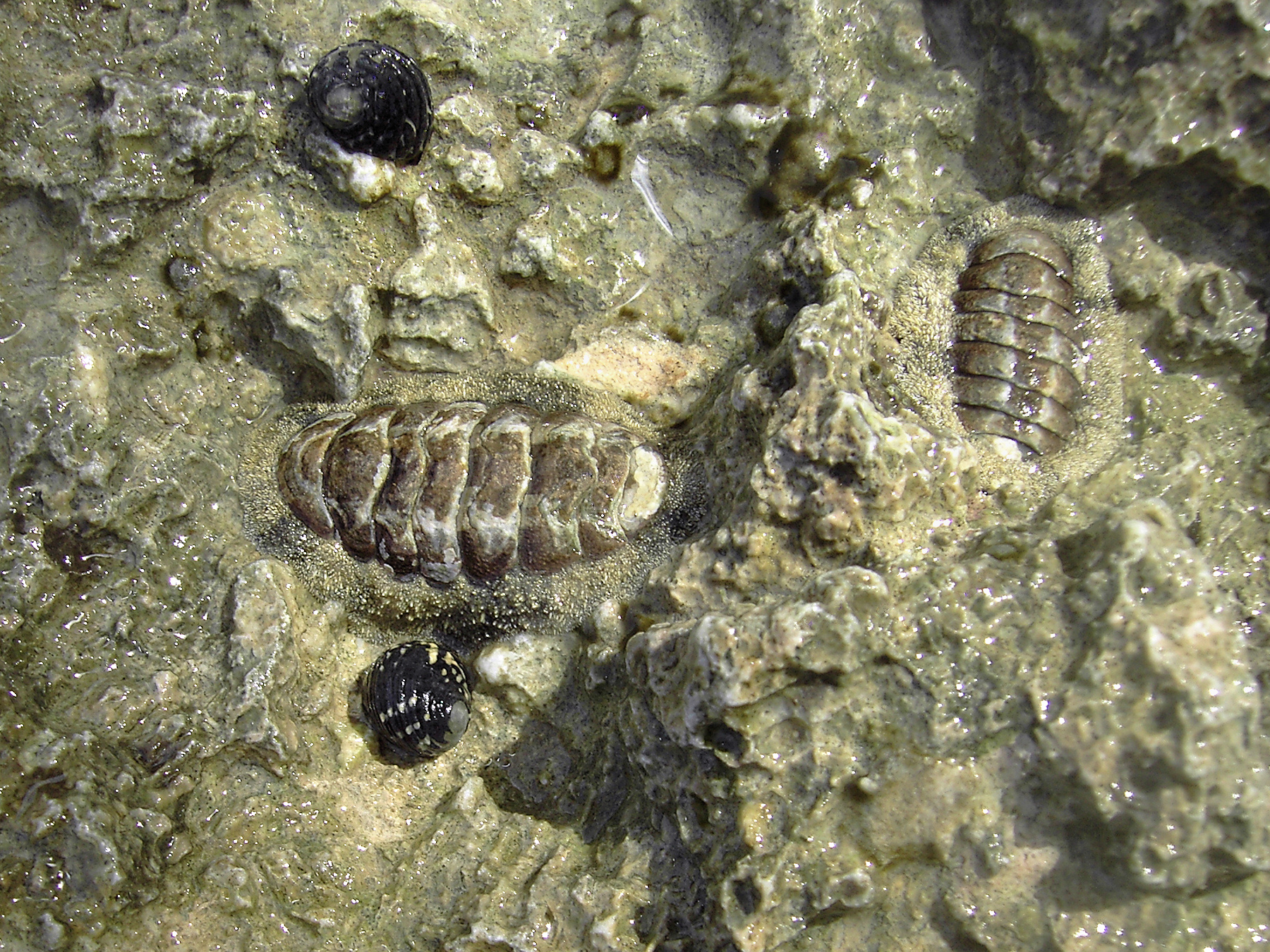|
S. Stillman Berry
Samuel Stillman Berry (March 16, 1887 – April 9, 1984) was an American marine zoologist who specialized in cephalopods. Early life Berry was born in Unity, Maine, but the family home was the Winnecook Ranch in Montana, which had been founded by his father Ralph in 1880. In 1897, he moved with his mother to Redlands, California. Berry received a B.S. (1909) from Stanford and his M.S. (1910) from Harvard. He then returned to Stanford for his Ph.D. work on cephalopods and got his doctorate in 1913. Career From 1913 until 1915, he worked as a librarian and research assistant at the Scripps Institution for Biological Research in La Jolla, California. This was the last paid employment he ever held in academia—all his later studies and expeditions were financed by the profits from the family ranch in Montana. From November 1946 to December 1969, Berry published his own journal, ''Leaflets in Malacology'', which primary contained articles which he had written himself. ... [...More Info...] [...Related Items...] OR: [Wikipedia] [Google] [Baidu] |
Unity, Maine
Unity is a town in Waldo County, Maine, United States. The population was 2,292 at the 2020 census. The town is the service center for the northern portion of Waldo County. Outside of Waldo County, it is best known as the home of the Maine Organic Farmers and Gardeners Association, its Common Ground Country Fair and former home of Unity College. Unity College was founded in 1965 to offset the economic effects of the declining chicken farming industry. As of 2007, the college was the town's largest employer. In 2020, the college announced a significant shift in its educational model, moving to a hybrid learning system that led to a reduction in staff by 15%. As of 2024, the original Unity campus is largely vacant, with only about 50 students using the facilities at any given time. History When originally settled by Quakers, the town was known as Twenty-Five Mile Pond Plantation. The name came from its being located on a pond twenty-five miles from Fort Halifax in Win ... [...More Info...] [...Related Items...] OR: [Wikipedia] [Google] [Baidu] |
The Festivus
''The Festivus'' is a publication about malacology and conchology. It is published by the San Diego Shell Club in San Diego, California. ''The Festivus'' started in 1970 as a shell club newsletter which was edited by Blanche Brewer. In 1976 Carole Hertz became the editor, and gradually ''The Festivus'' became increasingly scientifically respectable, and was transformed into a peer-reviewed scientific journal. Carole Hertz was the editor for 37 years. From 1985 up until 2014, issues of ''The Festivus'' contained scientific papers on mollusks, and each paper was peer-reviewed by a professional malacologist. Eleven issues were published annually: one issue per month, except for the month of December. In March 2014, the editorship changed dramatically: David P. Berschauer and David B. Waller became co-editors. The journal was altered in both format and scope; it became a quarterly publication in full color, and included scientific articles, popular articles and advertising. The ma ... [...More Info...] [...Related Items...] OR: [Wikipedia] [Google] [Baidu] |
1984 Deaths
__NOTOC__ The following is a list of notable deaths in 1984. Entries for each day are listed alphabetically by surname. A typical entry lists information in the following sequence: * Name, age, country of citizenship at birth, subsequent country of citizenship (if applicable), reason for notability, cause of death (if known), and reference. Deaths in 1984 January * January 1 ** Alexis Korner, British blues musician and broadcaster (b. 1928) ** Joaquín Rodríguez Ortega, Spanish bullfighter (b. 1903) * January 5 – Giuseppe Fava, Italian writer (b. 1925) * January 6 – Ernest Laszlo, Hungarian-American cinematographer (b. 1898) * January 7 – Alfred Kastler, French physicist, Nobel Prize laureate (b. 1902) * January 9 – Sir Deighton Lisle Ward, 4th Governor-General of Barbados (b. 1909) * January 11 – Jack La Rue, American actor (b. 1902) * January 14 ** Saad Haddad, Lebanese military officer and militia leader (b. 1936) ** Ray Kroc, American entrepreneur (b. 1902) * J ... [...More Info...] [...Related Items...] OR: [Wikipedia] [Google] [Baidu] |
1887 Births
Events January * January 11 – Louis Pasteur's anti- rabies treatment is defended in the Académie Nationale de Médecine, by Dr. Joseph Grancher. * January 20 ** The United States Senate allows the United States Navy to lease Pearl Harbor as a naval base. ** British emigrant ship '' Kapunda'' sinks after a collision off the coast of Brazil, killing 303 with only 16 survivors. * January 21 ** The Amateur Athletic Union (AAU) is formed in the United States. ** Brisbane receives a one-day rainfall of (a record for any Australian capital city). * January 24 – Battle of Dogali: Abyssinian troops defeat the Italians. * January 28 ** In a snowstorm at Fort Keogh, Montana, the largest snowflakes on record are reported. They are wide and thick. ** Construction work begins on the foundations of the Eiffel Tower in Paris, France. February * February 2 – The first Groundhog Day is observed in Punxsutawney, Pennsylvania. * February 4 – The Interstate Comme ... [...More Info...] [...Related Items...] OR: [Wikipedia] [Google] [Baidu] |
Google Books
Google Books (previously known as Google Book Search, Google Print, and by its code-name Project Ocean) is a service from Google that searches the full text of books and magazines that Google has scanned, converted to text using optical character recognition (OCR), and stored in its digital database.The basic Google book link is found at: https://books.google.com/ . The "advanced" interface allowing more specific searches is found at: https://books.google.com/advanced_book_search Books are provided either by publishers and authors through the Google Books Partner Program, or by Google's library partners through the Library Project. Additionally, Google has partnered with a number of magazine publishers to digitize their archives. The Publisher Program was first known as Google Print when it was introduced at the Frankfurt Book Fair in October 2004. The Google Books Library Project, which scans works in the collections of library partners and adds them to the digital inventory, ... [...More Info...] [...Related Items...] OR: [Wikipedia] [Google] [Baidu] |
Daffodil
''Narcissus'' is a genus of predominantly spring flowering perennial plants of the amaryllis family, Amaryllidaceae. Various common names including daffodil,The word "daffodil" is also applied to related genera such as '' Sternbergia'', '' Ismene'', and '' Fritillaria meleagris''. It has been suggested that the word "Daffodil" be restricted to the wild species of the British Isles, '' N. pseudonarcissus''. narcissus (plural narcissi), and jonquil, are used to describe some or all members of the genus. ''Narcissus'' has conspicuous flowers with six petal-like tepals surmounted by a cup- or trumpet-shaped corona. The flowers are generally white and yellow (also orange or pink in garden varieties), with either uniform or contrasting coloured tepals and corona. ''Narcissi'' were well known in ancient civilisation, both medicinally and botanically, but were formally described by Linnaeus in his ''Species Plantarum'' (1753). The genus is generally considered to have about ten ... [...More Info...] [...Related Items...] OR: [Wikipedia] [Google] [Baidu] |
Iris (plant)
''Iris'' is a flowering plant genus of 310 accepted species with showy flowers. As well as being the scientific name, iris is also widely used as a common name for all ''Iris'' species, as well as some belonging to other closely related genera. A common name for some species is flags, while the plants of the subgenus '' Scorpiris'' are widely known as junos, particularly in horticulture. It is a popular garden flower. The often-segregated, monotypic genera '' Belamcanda'' (blackberry lily, ''I. domestica''), '' Hermodactylus'' (snake's head iris, ''I. tuberosa''), and ''Pardanthopsis'' (vesper iris, '' I. dichotoma'') are currently included in ''Iris''. Three ''Iris'' varieties are used in the ''Iris'' flower data set outlined by Ronald Fisher in his 1936 paper ''The use of multiple measurements in taxonomic problems'' as an example of linear discriminant analysis. Description Irises are perennial plants, growing from creeping rhizomes (rhizomatous irises) or, in drier c ... [...More Info...] [...Related Items...] OR: [Wikipedia] [Google] [Baidu] |
Horticulture
Horticulture (from ) is the art and science of growing fruits, vegetables, flowers, trees, shrubs and ornamental plants. Horticulture is commonly associated with the more professional and technical aspects of plant cultivation on a smaller and more controlled scale than agronomy. There are various divisions of horticulture because plants are grown for a variety of purposes. These divisions include, but are not limited to: propagation, arboriculture, landscaping, floriculture and turf maintenance. For each of these, there are various professions, aspects, tools used and associated challenges -- each requiring highly specialized skills and knowledge on the part of the horticulturist. Typically, horticulture is characterized as the ornamental, small-scale and non-industrial cultivation of plants; horticulture is distinct from gardening by its emphasis on scientific methods, plant breeding, and technical cultivation practices, while gardening, even at a professional level, tends ... [...More Info...] [...Related Items...] OR: [Wikipedia] [Google] [Baidu] |
Land Snail
A land snail is any of the numerous species of snail that live on land, as opposed to the sea snails and freshwater snails. ''Land snail'' is the common name for terrestrial molluscs, terrestrial gastropod mollusks that have gastropod shell, shells (those without shells are known as slugs). However, it is not always easy to say which species are terrestrial, because some are more or less amphibious between land and fresh water, and others are relatively amphibious between land and salt water. Land snails are a Polyphyly, polyphyletic group comprising at least ten independent evolutionary transitions to terrestrial life (the last common ancestor of all gastropods was marine). The majority of land snails are pulmonates that have a lung and breathe air. Most of the non-pulmonate land snails belong to lineages in the Caenogastropoda, and tend to have a gill and an operculum (gastropod), operculum. The largest clade of non-pulmonate land snails is the Cyclophoroidea, with more than 7,0 ... [...More Info...] [...Related Items...] OR: [Wikipedia] [Google] [Baidu] |
Chiton
Chitons () are marine molluscs of varying size in the class Polyplacophora ( ), formerly known as Amphineura. About 940 extant and 430 fossil species are recognized. They are also sometimes known as sea cradles or coat-of-mail shells or suck-rocks, or more formally as loricates, polyplacophorans, and occasionally as polyplacophores. Chitons have a shell composed of eight separate shell plates or valves. These plates overlap slightly at the front and back edges, and yet articulate well with one another. Because of this, the shell provides protection at the same time as permitting the chiton to flex upward when needed for locomotion over uneven surfaces, and even allows the animal to curl up into a ball when dislodged from rocks. The shell plates are encircled by a skirt known as a girdle. Habitat Chitons live worldwide, from cold waters through to the tropics. They live on hard surfaces, such as on or under rocks, or in rock crevices. Some species live quite high in the i ... [...More Info...] [...Related Items...] OR: [Wikipedia] [Google] [Baidu] |
Taxon
In biology, a taxon (back-formation from ''taxonomy''; : taxa) is a group of one or more populations of an organism or organisms seen by taxonomists to form a unit. Although neither is required, a taxon is usually known by a particular name and given a particular ranking, especially if and when it is accepted or becomes established. It is very common, however, for taxonomists to remain at odds over what belongs to a taxon and the criteria used for inclusion, especially in the context of rank-based (" Linnaean") nomenclature (much less so under phylogenetic nomenclature). If a taxon is given a formal scientific name, its use is then governed by one of the nomenclature codes specifying which scientific name is correct for a particular grouping. Initial attempts at classifying and ordering organisms (plants and animals) were presumably set forth in prehistoric times by hunter-gatherers, as suggested by the fairly sophisticated folk taxonomies. Much later, Aristotle, and later st ... [...More Info...] [...Related Items...] OR: [Wikipedia] [Google] [Baidu] |








